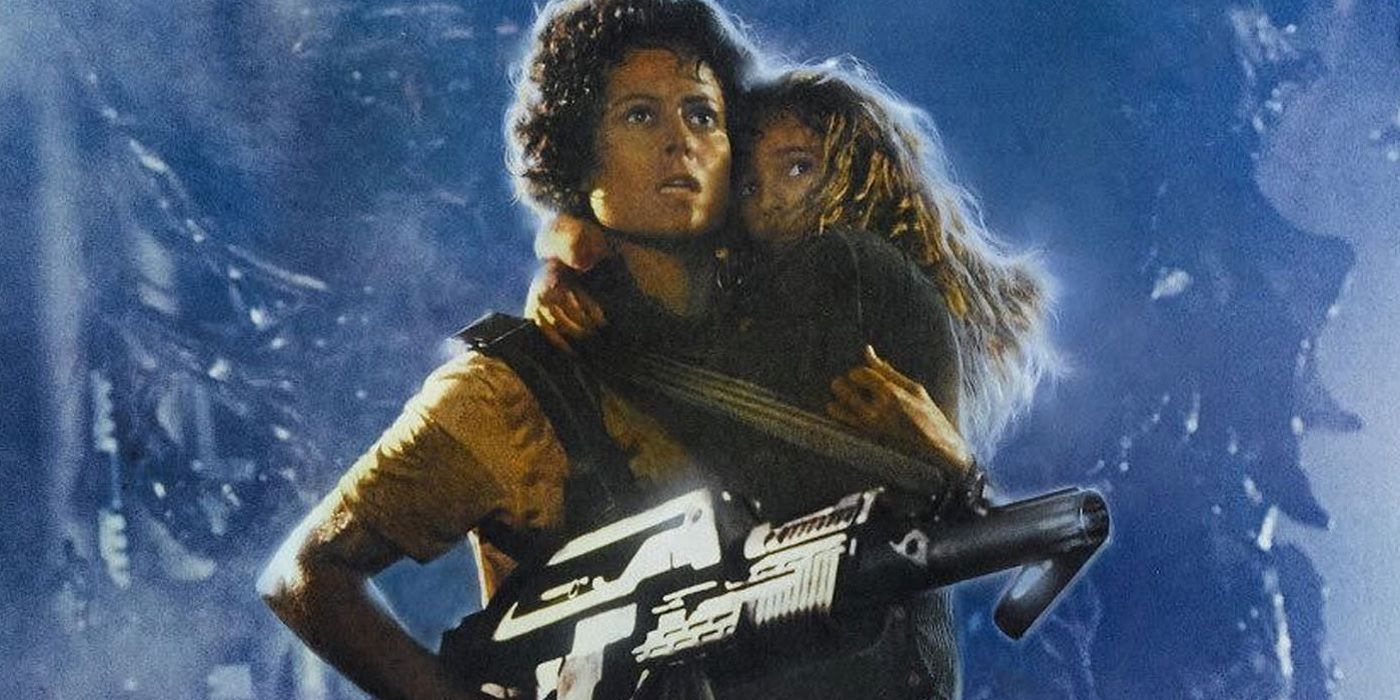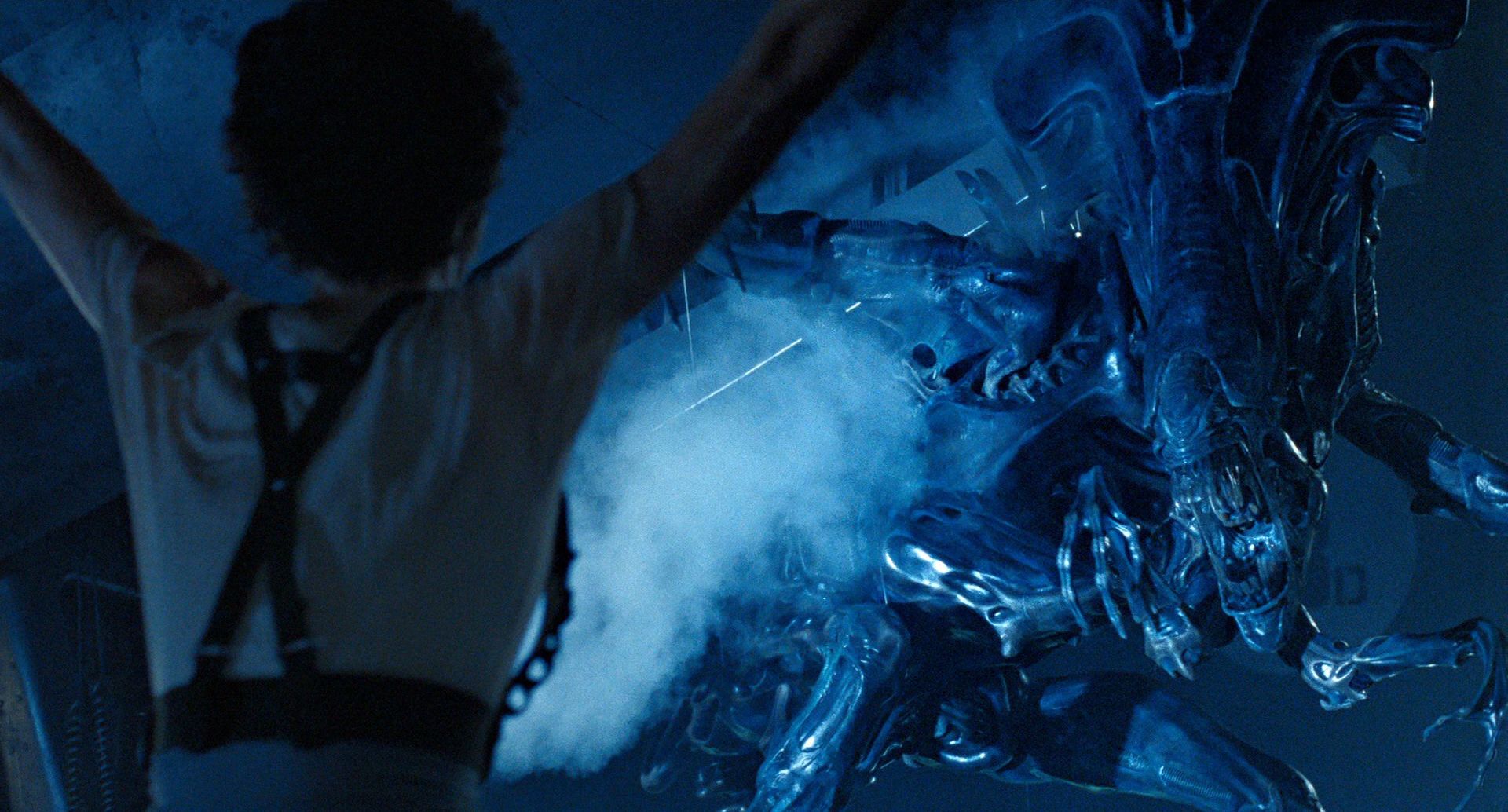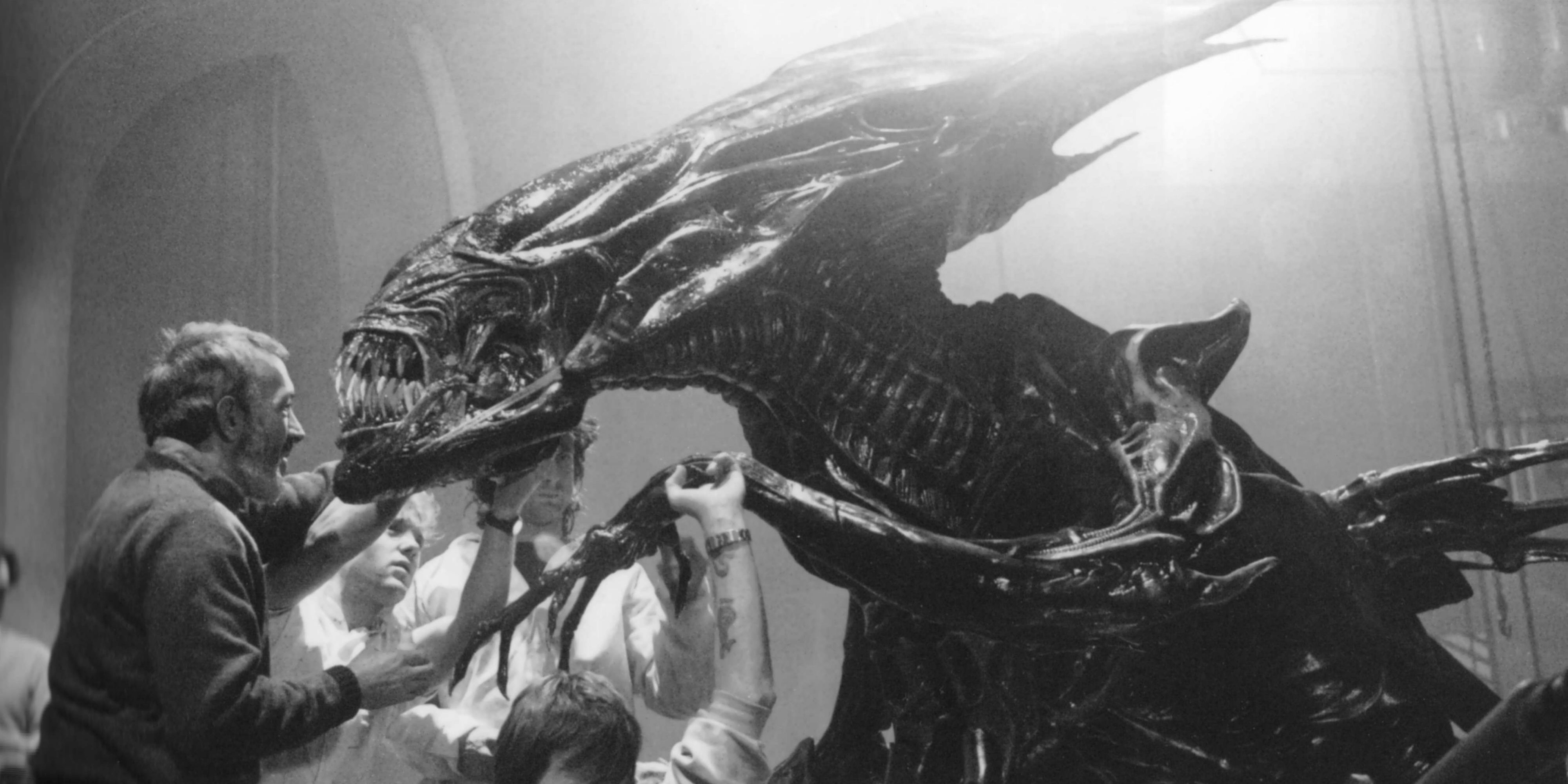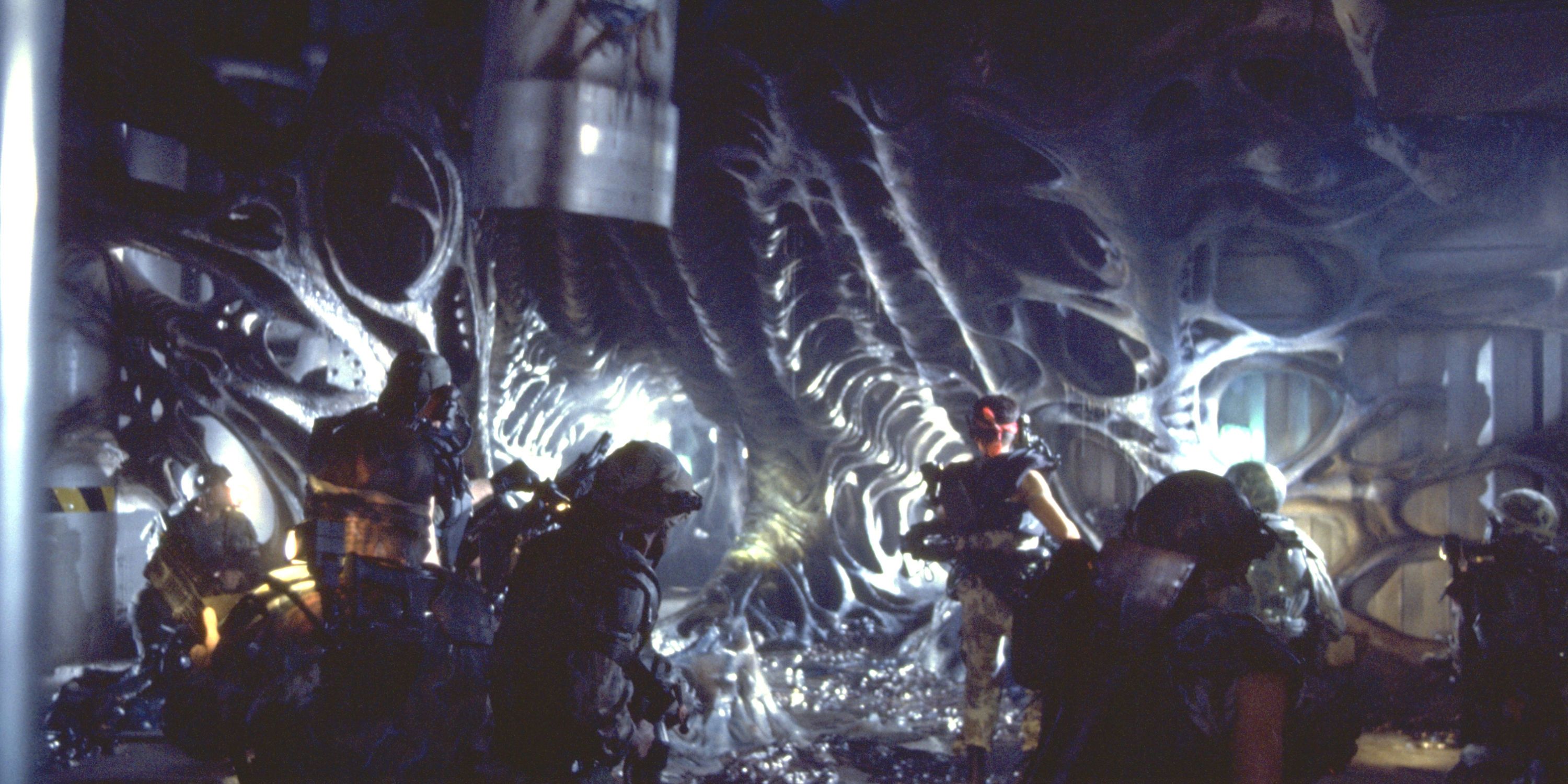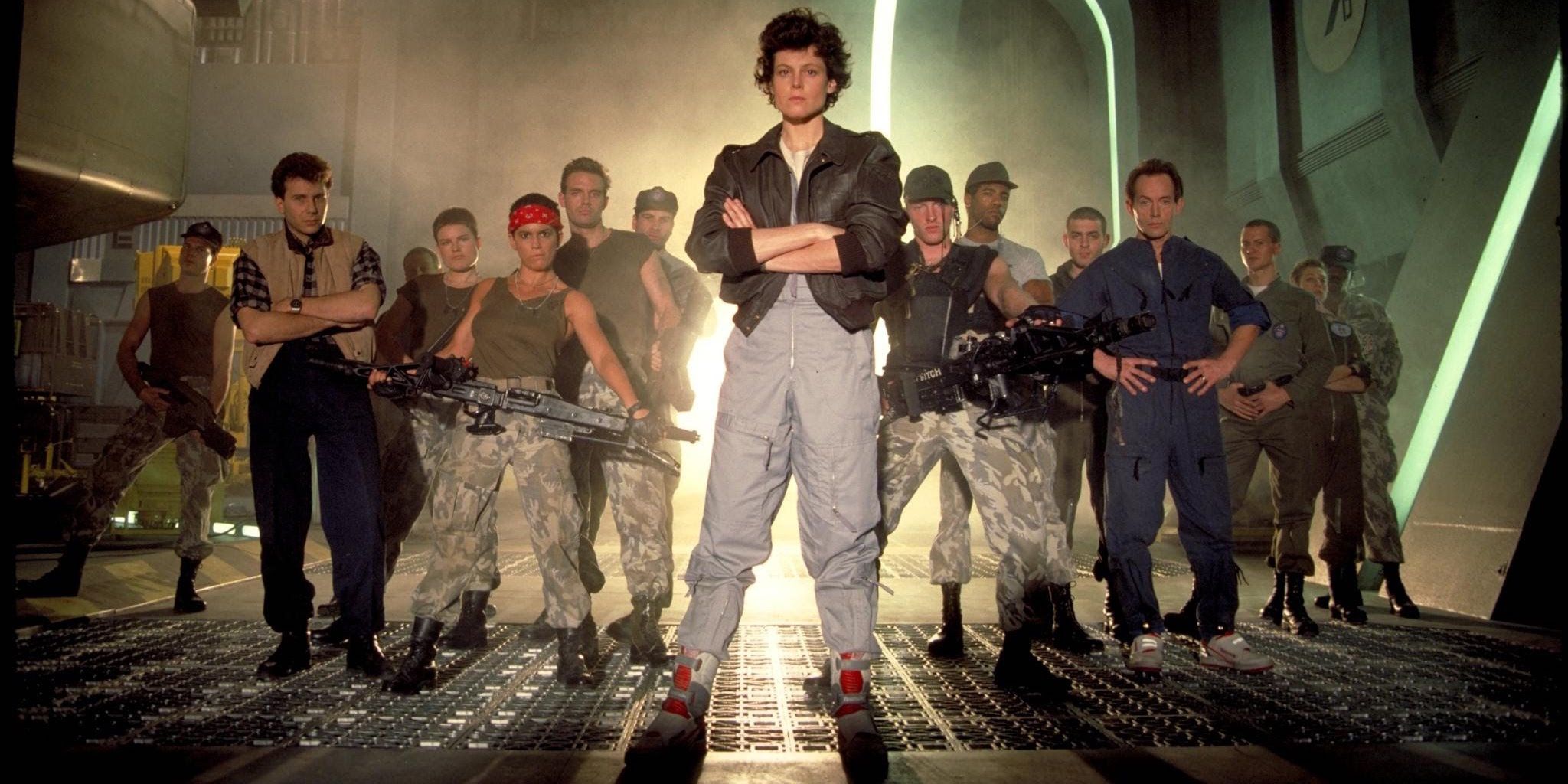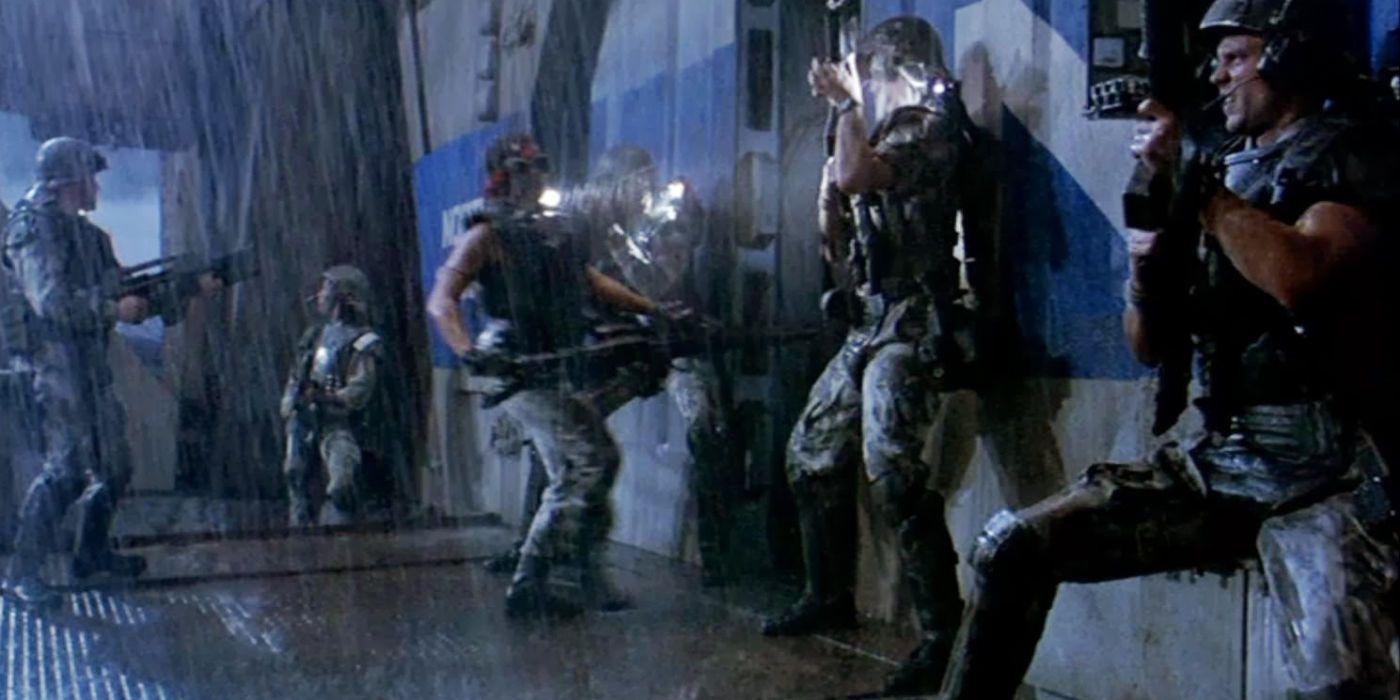It’s hard to believe that 30 years have passed since Aliens burst through the chests and into the hearts of audiences everywhere. Ripley, Newt, and Hicks took on a swarm of xenomorphs – who managed to wipe out an entire platoon of the baddest Colonial Marines ever assembled – and lived to see the sequel (well, at least Ripley did). James Cameron’s space action classic not only captured the claustrophobic feel and creeping menace of its popular predecessor, but successfully built upon Ridley Scott’s Alien mythos. The action-packed follow-up also pulled in a cool $130 million at the box office worldwide. Most importantly, the film renewed the franchise’s momentum and viability by tearing up cinemas 1986.
Since the arrival of the well-loved sequel there have been three follow-ups, a pair of loosely related Aliens Vs. Predator pics, and Ridley Scott’s Prometheus prequel. Few of the later films, including David Fincher’s Alien 3 and Jean-Pierre Jeunet’s Alien: Resurrection, came anywhere near the power and suspense of the original and its action-packed successor. With a possible direct sequel and several prequels on the way, fans of the pulse-pounding original and equally impressive follow-up are holding their breath to see how the new entries affect the franchise.
Before the Alien world blossoms once more like a hungry facehugger, we celebrate the anniversary of one of the greatest sequels of all time, and what made this classic sci-fi actioner tick.
Why Aliens Killed It 30 Years Ago
The 1980s were undoubtedly the era of the action flick. Stars like Arnold Schwarzenegger, Sylvester Stallone, Jean Claude Van Damme, and Chuck Norris, among others, made their lasting impact during the Reagan era. With the climate set for epic adventures by the Indiana Jones series and science fiction chillers by Aliens’ predecessor, it’s unsurprising that Canadian director James Cameron found lasting success during the jazzercise decade.
After cutting his teeth on Piranha II: The Spawning – the ultra-ultra-low budget sequel to Roger Corman’s ultra-low budget original, a camp classic in its own right (flying piranhas, anyone?) – Cameron made a name for himself with The Terminator. The 1984 film launched its director into the spotlight, along with its star. The success of the time travel android chase picture, with its somewhat hard sci-fi elements and breakneck pacing, perfectly set up Cameron’s next big thrill, Aliens – which coincidentally filmed around the time of The Terminator’s release.
Based on the strength of his prior film and a 90 page treatment for "Alien 2," Cameron won the right to continue the story of Ridley Scott's creepy-crawler. The director built off of the original Alien’s claustrophobic horror by adding heart-pounding action and a hearty dose of well-blended social commentary as well. Of course, it also helped to have an amazing cast, including the return of Sigourney Weaver and a badass gaggle of space marines led by Michael Biehn and Bill Paxton, among others.
The strong ensemble of well-rounded characters (for an action film, anyway) meshed well with Cameron’s directorial flair and understanding of practical effects to create a slick little vehicle. Aliens was especially effective due to the veiled body-horror angst of the 80s, a decade where diseases like AIDS and cancer began to prolifically invade the body and kill it from within. It also worked as an allegory for the recently concluded Vietnam War, with its allusions to a well-armed and technologically superior armed force decimated by a dedicated localized enemy.
Successfully Following a Tough Act
Blowing away audiences is a massive challenge in the first place, but it’s a whole lot easier to wow moviegoers if you’re not trying to match wits with your own brilliant predecessor. The Empire Strikes Back is a perfect example. With its blend of Flash Gordon-y action, Akira Kurosawa-esque honor, and pop-mysticism, Star Wars: A New Hope captured the imaginations of a generation. In order to not just trail but thrive after the smash hit, Star Wars' sequel needed deft planning and an element of risk, along with deeper characterization. Empire writers Leigh Brackett and Laurence Kasdan deftly combined a shocking defeat of our heroes with a budding romance between Han and Leia, and the possibility of a major death in the ‘family’ to great success.
Likewise with Alien, now considered one of the greatest science-fiction thrillers of all time, Cameron was working off a film which featured tense plotting, gorgeously rendered set pieces, the freaky titular xenomorph, and phenomenal character actors such as John Hurt, Veronica Cartwright, Yaphet Kotto, and Harry Dean Stanton. To replicate Scott’s masterpiece, the subsequent movie required a faithful tie-in to the original and another stellar cast. But it also had to up the ante.
Along with the resurgence of Ellen Ripley (Sigourney Weaver), Aliens also saw the introduction of the Colonial Marines, including Corporal Hicks (Michael Biehn), Private Hudson (Bill Paxton), Private Vasquez (Jenette Goldstein), Sergeant Apone (Al Matthews), and the ever-versatile Lance Henricksen as yet the shockingly non-villainous android, Bishop. Moreover, despite initial knee-jerk fears of the 'child in jeopardy' role, Carrie Henn played Newt as a likeable and adept young survivor. Last but certainly not least, Paul Reiser rounded up the cast as slimy Weyland-Yutani shill, Carter J. Burke.
The sets were bigger, the action was louder and more in your face, and the characters were equally compelling in Cameron’s update. In addition, his use of shadowy alien hordes and strobe lighting to punctuate the action created a tense atmosphere where anyone – whether child, marine, or action heroine – could wind up with a melted face or as an alien host. The director also used another tactic - sound - to create an added layer of tension. The sonar locator, while quaintly low-tech by modern standards, utilized quickening pulses to punctuate and build the growing dread.
As a sequel and a standalone entry in the series, Aliens can still clutch at an audiences’ face and never let go. To James Cameron’s credit, the outer-space shocker remains wildly popular and is heavily referenced in sci-fi and pop culture.
Why Aliens Is Still Relevant
Thirty years is a lengthy vintage for any film. Even amazing films like Ghostbusters and 2001: A Space Odyssey begin to look dated by their era and the rapid march of technological progress. However, a classic film’s true test of time rests with its ability to make its audiences ignore the outdated technology and live inside the universe it enshrouds us in. Aliens is that kind of film.
Sure, the vaguely 80s space hair and costumes look a little time-capsule-y today, but the amazing space marine uniforms crafted by armorer Terry English and the beautiful colonial sets created by Peter Lamont hold up very well to the ages. Most importantly, the practical effects, honed through a combination of lack-of-time, budgetary constraints, and Cameron and the Skotak Brother’s SFX magic, continues to impress even after the CGI era began.
The lighting and camera work were also somewhat revolutionary for their time. Cameron and Director of Photography Adrian Biddle used over-the-shoulder SteadiCam shots and space marine flashlight lighting to great effect, evoking a tense atmosphere and some quality scares from the light and shadow play. The introduction of elements like the exosuit power-loader (used effectively during the climax) and the U.S. military-inspired vehicles added sci-fi gravitas and visually reference topical events.
Beyond the set design and the alien effects, one of the biggest reasons for Aliens continued relevance is its characters. While the Colonial Marines provide an amazing backdrop, the bond which forms between Ripley and Newt is one of the most enduring elements of the film. More so, Sigourney Weaver, who nearly nailed down an Oscar for her role, was able to refine one of the greatest action heroines of all time in the film. Her character was strong yet vulnerable, cunning yet sensitive enough to brave certain peril to rescue a child she had no prior attachment to. In a decade marked by over-the-top masculinity, Ripley was a strong counterpoint and Aliens was truly showcased her versatility and yet another reason the film was truly remarkable.
The strengths of Cameron’s vision translated into an instant classic and built the xenomorph romp into one of the most influential sci-fi action films in history.
Aliens Influence Science Fiction and Pop Culture
In a recent interview, James Cameron passively-aggressively ragged on J.J. Abrams’ recent Star Wars installment, calling it a “retrenchment to things you had seen before” – which is true to a degree, albeit by intent. While most filmmakers out there, barring perhaps Lucas himself, ought not throw stones from their heavily-windowed Hollywood homes, Cameron has a degree of merit behind his offhanded comments. Even if criticism of his own retreads of his earlier work – some see world box office champ Avatar itself as a retread of Aliens – the director landed several of the highest-grossing pictures ever and contributed countless innovations to the film world.
His bragging rights aren’t merely rooted in the critical (numerous award nominations) and commercial success of Aliens, but from its continued influence in the genre. Aspects of his seminal xenomorph sequel are scattered throughout the action and science fiction genres, as well as the video game world.
Ironically Paul Verhoeven’s cinematic version of Robert Heinlein’s Starship Troopers – the same book Cameron forced his Colonial Marines to read before filming began – used many of the same camera techniques and action tropes which Aliens popularized. Cameron’s work also influenced the way filmmakers create moody action pieces in science fiction. The dreamlike, shadowy imagery Ridley Scott first used was amplified to great effect in the follow-up. These techniques obviously found their way into later Alien franchises and scores of other science fiction films.
Popular elements from the film also cropped up as direct references and homages in other science fiction such as Christopher Nolan’s mind-bender Interstellar, which had not one, but two characters awaken in a space station hospital bed after half a century. The Death Race 2000 remake sequel Death Race 2 had a prison system managed by the eerily familiar Weyland Corporation as well. In a tribute to his successor, Ridley Scott even paid lip service to Cameron in his loose prequel, Prometheus, when a scientist shouts “We are leaving!” a la Corporal Hicks.
Elements of the film pervades general popular culture as well. Filmmaker Katherine Bigelow, who married and divorced the director, used the tight-knit crew of Lance Henricksen, Bill Paxton, and Jenette Goldstein for her vampire western Near Dark. Seth McFarlane’s talking teddy bear Ted mentions also mentions android Bishop and cribs his knife trick during the party scene. Other bits and pieces of the film like the alien locater, the term ‘bug hunt’ (borrowed from Starship Troopers), and Paxton’s improvised line “Game over, man. Game over!” continue to show up in television, streaming features, and films from Mystery Science Theater 3000 to Predator 2 to Firefly to The Maze Runner.
His successful use of roving steadicam also inspired the popular early first person shooter games, including the classic Aliens Vs. Predators game for the short lived Atari Jaguar. The game mimicked the director’s over-the-shoulder, first person shots, and the eerie sonic tracking device used by the film to great effect (anyone who played that game alone in the dark likely recalls hearing the shrill crescendo of the alien locator in their nightmares). The influential horror game Resident Evil also plays homage to plots and monster design at various points in its series. And of course, the main heroes of Nintendo’s Contra battle suspiciously xenomorph-like bosses and bear the names Bill Rizer (Bill Paxton-Paul Reiser) and Lance Bean (Lance Henricksen-Michael Biehn).
Clearly the loosely-shared universes of science fiction and pop culture have already paid tribute to Cameron’s seminal sequel. Aliens remains a high-water mark that many future films, including those in the ever-growing franchise, will be measured against.
What Future Films Can Learn From Aliens
As a continuation of its renowned predecessor, Aliens perfectly adapted the mythos of Ridley Scott’s seminal film while also building some of its own. James Cameron’s film allowed its story to seep in via the characters and events, rather than relying entirely on dialogue for exposition. He also held his cards close to his chest, letting just enough trickle out to successfully ramp up suspense without telegraphing the major reveals.
Cameron layered his film with social commentary (something science fiction is known for) but didso without making it heavy-handed. Devotees of the film even debated whether the space actioner was a Vietnam analog for years, until Cameron admitted that it was. Also, as opposed to the original film, his villains aren’t necessarily the eponymous creatures. Sure the xenomorphs don’t exactly roll out the welcome wagon with roses in their extendo-mouths, but compared to the callous, inhumane Weyland-Yutani Corp, they more closely resemble the Viet Cong defending their home turf.
If Cameron and Scott's influences continue to pervade, the future of the Alien series looks bright. Scott himself will bring the series full circle with Alien: Covenant. Clearly aware of the impact his film and its sequel, Scott’s next installments will expand the franchise in exciting and revealing ways. Neill Blomkamp’s upcoming sequel, which should still happen, looks to be a direct sequel to Cameron’s film. Like Scott, Blomkamp has a unique opportunity to explore the characters and themes developed in Aliens.
On the eve of its thirtieth birthday, Cameron’s entry remains influential and important to not only the series, but to science fiction and action films in general. Future filmmakers helming Alien films, as well as those simply seeking to capture its intensity and dramatic impact, ought to study Aliens before putting their vision into action. Cameron’s efforts to capture the feel and flavor of deep space in the future, as well as draw believable and likeable characters under extreme duress serve as a template for quality science fiction. However, filmmakers of all stripes can expand their understanding of dramatic tension and ingenuity in their own work.
What was your favorite moment from Aliens? Let us know in the comments?
Next: Alien: Covenant Star Danny McBride Says ‘There is No Comic Relief’
Alien: Covenant opens in theaters on August 4th, 2017.

